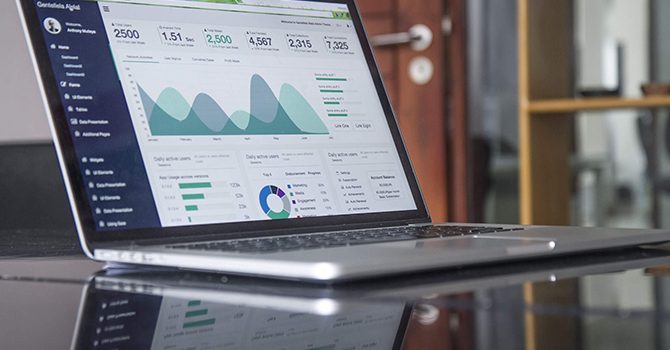Introduction
The recently published DHL Research Brief entitled “The Supply Chain Talent Shortage” outlined a supply chain human resource crisis where “demand for supply chain professionals exceeds supply by a ratio of six to one”. DHL surveyed 350 Logistics and Supply Chain professionals globally and discovered that changing job requirements is one of the main reasons that there is a lack of people to perform procurement, logistics and supply roles. This was further explained as too few people with the right balance of professional / leadership skills and technical skills.
The Importance of Balanced Leadership and Technical Skills
ADR’s perspective fully supports this conclusion, based on our experience and research as an international procurement consulting firm. Using ADR’s Procurement Skills Assessment Tool, Development Needs Analysis (ADR DNA), we can demonstrate the gap between technical and professional capability today.
ADR DNA has been in use since 2003. Since then, over 20,000 capability assessments have been completed by procurement and supply chain professionals globally.
One of our main findings is a sharp division in the capability strengths for technical skills versus professional / leadership skills. Typically, technical skills score higher, as this table illustrates.
Table 1: Average Technical and Leadership Skills Results (2010-2017)
| Average Technical Skills Assessment Results (%)* | Average Leadership Skills Assessment Results (%)* | |
| Entry Level Roles | 48 | 32 |
| Procurement and Supply Professional Roles | 65 | 47 |
| Management Roles | 76 | 62 |
(*100% represents best practice exemplar in the capability group.)
Organizations that take part in the ADR DNA skills assessment survey set their own aspirations for the percentage score for each capability (“target”). These targets are typically a minimum of 40% for entry-level roles, 60% for professional roles and 80% for management roles. The data trend therefore shows a significant shortfall in the expected results for leadership skills. The exact leadership capabilities that are surveyed vary, because ADR DNA is a customized survey for each organization. But the most popular topics surveyed are shown in table 2.
Table 2: Top Skills Surveyed in ADR’s Development Needs Analysis (ADR DNA) Skills Assessment Tool
| Top Technical Skills Surveyed | Top Leadership Skills Surveyed |
|
|
Clearly, there is work to be done to ensure that the leadership skills in procurement and supply are as good as, if not better, than the technical skills. The symptoms of this unbalanced skills mix are:
- Procurement and Supply professionals ineffective in influencing business stakeholders and executives
- Stalled career pathways, because individuals do not have the right skills to lead
- Poor supplier management approaches, resulting in unmotivated suppliers and low value delivered back to the business
The first two points are evidenced by the DHL survey. DHL found that nearly 70 percent of survey respondents listed “perceived lack of opportunity for career growth” and “perceived status of supply chain as a professional” as reasons that staff failed to stay in the procurement, supply and logistics profession over the long term.
As for supplier management, many organizations are currently putting a strong focus on this skill, recognizing that being a customer of choice for your suppliers is a source of competitive advantage.
The balance of leadership skills and technical skills is key to supplier management success. For example, Coventry Building Society, a UK-based financial services firm, recently won a Princess Royal Training Award for its Supplier Management Training Program that integrated both skill sets for learners in procurement and functional roles. The outcomes are robust business continuity planning using common commercial skills. These skills include technical frameworks as well as leadership skills such as relationship-building and influence.
Procurement and Supply Chain Talent Enablers
Given this skills landscape for the procurement and supply chain profession, the next section outlines the 3 enablers that help organizations to boost both technical and leadership skills in their teams:
- A Procurement and Supply Chain competency framework
- An organizational accreditation program or external certification
- Integration of the technical and leadership skills in the learning program.
One must-have enabler of talent management is a procurement and supply chain competency framework. This is a definition of the required competencies, how they can be evidenced and what proficiency level is expected for every role in the department. This should have clear linkages back to the business needs, so the organization understands why these are the critical skills and skills targets.
As BCG state in their 2015 article “The Global Leadership and Talent Index”, organizations “need to put in place a leadership model that clearly articulates the competencies that their leaders should demonstrate”. And for those “talent laggards” who still have a journey to becoming best in class at people development, they should “embed the desired leadership competencies into recruiting, performance management, and reward systems and establish structured training and development programs to develop those competencies”.
A second key enabler of talent management is a learning pathway that offers value and progression to the learner. An organizational accreditation program or external certification typically involves the learner taking progressing through assessed formal and informal learning that is closely related to their job role. In ADR’s experience, these yield the best results when line managers are fully involved in coaching and monitoring the on-the-job learning element, with structured tools to help guide their staff members’ efforts.
A third essential element of procurement and supply talent management is the integration of the technical and leadership skills in the learning program. Organizations that recognize that the procurement and supply skillset is a holistic blend of all capabilities offer training that links the two. For example, technical skills training that incorporate experiential elements such as role play and creative thinking that is relevant to current job challenges.
Conclusion
Procurement and supply continues to have a challenge when it comes to how it is perceived by suppliers, business stakeholders and prospective recruits. This is further exacerbated by the fear that artificial intelligence may make the job defunct. Now is the time for procurement and supply leaders to address the talent crisis and demonstrate the value that human skills bring to the role, such as empathy, mediation and facilitating creative solutions.










 In summary, while strict formality is not a pre-requisite, there is certainty that the effectiveness of demand management to deliver improvement outcomes will be proportional to the quality and quantity of resource and business support invested – by both the company and its supply chain. Therefore addressing ongoing improvement in the contracting and selection process with suppliers will provide a necessary foundation.
In summary, while strict formality is not a pre-requisite, there is certainty that the effectiveness of demand management to deliver improvement outcomes will be proportional to the quality and quantity of resource and business support invested – by both the company and its supply chain. Therefore addressing ongoing improvement in the contracting and selection process with suppliers will provide a necessary foundation.